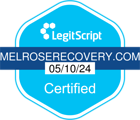What To Bring To Rehab
Residential rehab opens the door to healing from a drug or alcohol addiction. However, you’re also living at the facility for up to three months. It’s important to feel comfortable. Knowing what to bring to rehab can put your mind at ease.
Understanding What Happens at a Residential Rehab Facility
When you check in, you start treatment with a detox center program. This process helps the body to shed the drug’s chemicals from the system. It can be uncomfortable, but pharmacological support keeps you pain-free. When you finish, you transition to the rehab portion of treatment.
In this setting, you uncover the reasons for your addiction. In the process, you find new ways of handling stress and triggers. Possible modalities include:
- One-on-one talk therapy that encourages self-examination and identification of dysfunctions
- Group therapy sessions with an eye on relapse prevention and disease education
- Relaxation opportunities that may incorporate meditation
- Exercise therapy that benefits individuals of all fitness levels to work on building physiological health
- Social gatherings, which train you to relate to peers in a drug-free situation
Your Transformation Start Here

What to Bring to Rehab
If you like to do so, please note that staff members will lock up your money, picture ID, and insurance cards in the office. It stays there until you want to use it. This policy prevents theft and loss.
Clothing choices should favor comfort, relaxation, and exercise. You don’t have to splurge on a new yoga outfit or running shoes; just bring what you have and feel comfortable in. Since there are some social group settings, bring casual clothes for hanging out.
Some program participants include a blank journal in their “what to bring to rehab” list. Because you have some time to reflect on what you learn, you may want to start journaling. Others realize that they think of things to bring up during psychotherapy after a session. They like to take notes for the upcoming meetings with their therapists.
What Not to Bring to Rehab
Leave toiletries at home that contain alcohol. This might include perfumes and some mouthwashes. Even if you don’t struggle with an alcohol use disorder, consider that someone else might. Keeping these types of products out of the rehab facility is the best policy.
Discuss any over-the-counter or prescription drugs with an intake counselor. This addiction specialist will help you decide how to store the items for use. In some cases, they may have contraindications with medications the facility uses to help you during detox. A brief discussion with the expert will make it clear how to handle these items.










